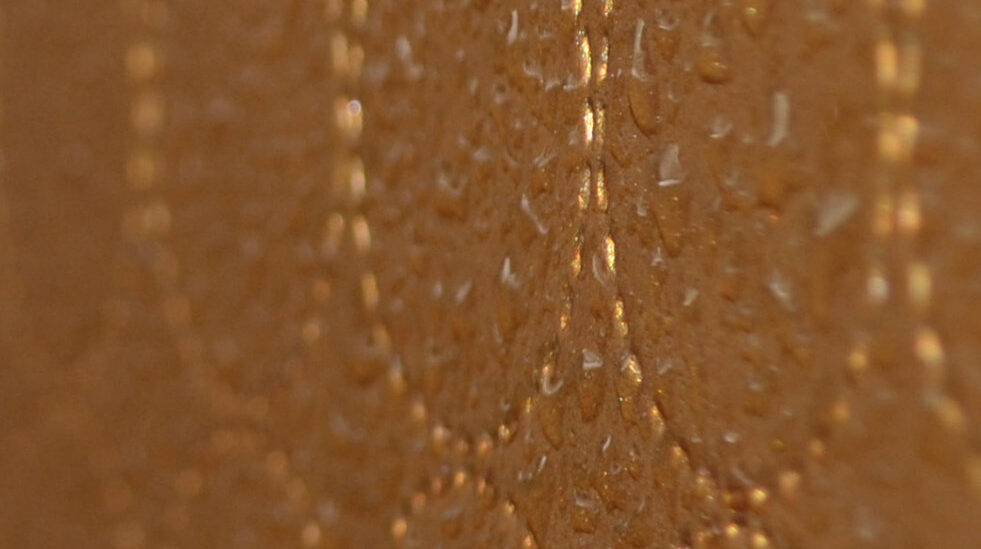Upgraded efforts to maintain clean and healthy facilities may result in damage to the surfaces being disinfected, according to protective coating chemists at APV Engineered Coatings.
The issue is particularly acute with coated vinyl wallcoverings used in healthcare, education and hospitality facilities, where the strong disinfectant agents used to combat viruses like COVID-19 can degrade the coating film on the wallcovering’s surface, weakening its protective performance.
“As Americans return to work, school and travel this fall, facility managers and maintenance professionals will also ramp-up their cleaning and disinfecting protocols for commonly touched surfaces,” said Ryan Scott, product development manager, APV Engineered Coatings. “At the same time, they need to be careful that frequently-applied, high-concentration disinfectants don’t lessen the protective functionality of the coatings used on those surfaces.”
Manufacturers of commercial wallcoverings coat their products to make them more durable and resist against dirt, stains, chemicals and moisture. Some coatings, such as the VYNGUARD® Polycarbonate Topcoat with Anti-Microbial from APV, also resist the growth of mold, mildew, and bacteria – an important consideration in damp environments and communal settings. While cleaning coated wallcoverings under normal protocols should not damage them, the impact of more frequent cleaning with harsher chemical concentrations could be a concern.


Before Cleaning and Disinfecting
Scott offers three important pieces of advice for facility professionals who want to maintain the integrity of their buildings’ wallcoverings while also complying with current, stricter cleaning and disinfecting protocols.
1. Know what type of wallcovering you have.
Not all commercial wallcoverings are the same, and some are more durable than others in resisting the mechanical effects of cleaning. The right coating can help to improve the durability of each type of wallcovering. Type I wallcoverings are light-duty and typically used in apartment and office buildings, hotel rooms, waiting rooms and other budget-conscious projects, as well as for ceilings and areas of light abrasion. Type II wallcoverings are used for heavier-traffic applications in hospitality, healthcare, office buildings, retail, education and other facility interiors and are designed to stand up to average to heavy scuffing. Type III wallcoverings are the most durable and are used in extremely heavy traffic locations as well as wainscot and other low areas exposed to movable equipment or rough abrasion, such as hospital corridors and elevator banks.
2. Know if your wallcovering is coated.
Not all wallcovering manufacturers use durable protective coatings on their products. Instead, they prioritize low cost or initial aesthetics over long lifecycle, durability, and stain and chemical resistance. Harsh disinfectants can degrade the wallcovering and allow the vinyl’s plasticizers to migrate to the surface, shortening its usable life. Facilities professionals can learn more about the coating used on their wallcovering by contacting the wallcovering manufacturer and asking for results of key industry tests, including the ASTM F793 Standard Classification of Wallcovering by Durability Characteristics and the ASTM D-1308 Standard Method for Test for Effect of Household Chemicals on Clear and Pigmented Organic Finishes.
3. Know your cleaner/disinfectant concentration and application frequency.
Common disinfectants include quaternary ammonium salts (QAS), isopropyl alcohol, ethyl alcohol, peroxide and chlorine (bleach). Effective concentrations of these types of anti-microbials can be found on the container of an EPA-approved disinfectant and are also outlined by CDC guidelines, both of which should be referenced against cleaning/disinfecting procedures provided by the wallcovering manufacturer. The EPA is a particularly valuable source of information for identifying disinfectants approved to work as intended and their effective concentrations. Facility professionals should be aware that the germ- and virus-killing action of these disinfectants—which kill the bacteria by being absorbed into its cell walls and damaging the membrane—can also degrade the wallcovering’s coating, especially when used more often or at higher concentrations than recommended.
“APV works closely with wallcovering manufacturers to formulate our VYNGUARD® coatings with novel raw materials that both improve the performance and lifetime of wallcoverings as well as help them withstand aggressive cleaning and disinfecting,” Scott said. “We test our coatings extensively and prioritize third-party validation testing on treated wallcovering under the latest ASTM standards to help raise the bar on performance.”
About APV Engineered Coatings
Founded in 1878, APV Engineered Coatings custom formulates and manufactures industrial coatings and advanced chemical products in Akron, Ohio. APV is a partner for some of the world’s top-producing manufacturers due to its expertise in chemical and coating composition, the commercialization of advanced materials and large-scale production. The company’s innovative solutions have been integrated into a variety of industries for unique applications. Product offerings range from adhesives and release agents, to crayons and inspection marking tools, to water-based industrial inks and high-performance coatings. For more information, call 800-772-3452 or visit www.apvcoatings.com. Follow us on Twitter, LinkedIn, and Facebook using the handle @APVcoatings. Join the conversation or learn more about this product using #Vynguard or visiting www.vynguard.com.
